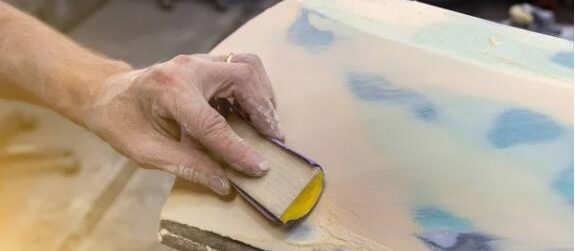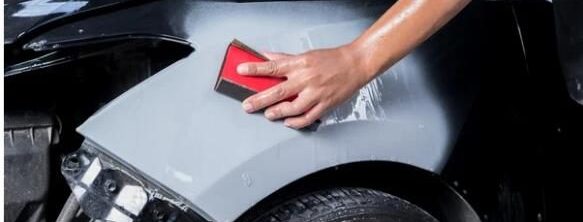When it comes to refinishing surfaces, whether it’s for woodworking, automotive bodywork, or home improvement projects, sanding is an essential step to achieve a smooth and polished finish. Two common methods used for sanding are dry sanding and wet sanding. Each technique has its distinct advantages and applications, and understanding the differences between them is crucial for achieving optimal results. In this article, we will delve into the distinctions between dry sanding and wet sanding, exploring their unique characteristics, best practices, and when to use each method.
Understanding Dry Sanding
1. The Basics of Dry Sanding
Dry sanding is a traditional sanding technique that involves using abrasive materials, such as sandpaper or sanding discs, to remove surface imperfections, rough edges, or old finishes from various materials. The process is called “dry” because it does not involve the use of any liquid or lubricant during sanding. Instead, dry sanding relies solely on the abrasive action of the sandpaper to achieve the desired results.
2. Advantages of Dry Sanding
- Convenience: Dry sanding is straightforward and doesn’t require any additional equipment or materials other than sandpaper or sanding discs. This makes it a convenient option for quick touch-ups or small-scale projects.
- Less Mess: Since there are no liquids involved, dry sanding produces less mess compared to wet sanding. There are no water drips or wet slurry to clean up afterward.
- Faster Drying: After dry sanding, the surface is ready for further treatment or finishing immediately, as there is no water that needs to evaporate.
3. Ideal Applications for Dry Sanding
Dry sanding is most suitable for applications where precision is essential and minimal material removal is required. It is commonly used in woodworking, metalworking, and drywall finishing. Some common examples include:
- Smoothing rough wood surfaces before applying a finish.
- Preparing metal surfaces for painting or welding.
- Sanding drywall joints and seams for a smooth, paint-ready finish.
Understanding Wet Sanding
1. The Basics of Wet Sanding
Wet sanding, as the name suggests, involves the use of water or a water-based solution as a lubricant while sanding. This technique is particularly useful for achieving ultra-smooth finishes and reducing heat buildup during the sanding process. Wet sanding can be performed by hand or with the assistance of specialized tools, such as wet sanding blocks or sanding sponges.
2. Advantages of Wet Sanding
- Better Finish: Wet sanding produces smoother and finer finishes compared to dry sanding. The water lubrication prevents the abrasive material from clogging, resulting in a more consistent and even sanding action.
- Reduced Heat and Dust: The presence of water helps dissipate heat generated during sanding, which can be beneficial when working on delicate surfaces. Additionally, wet sanding minimizes the release of airborne dust particles, making it a cleaner and safer option.
- Enhanced Control: The water creates a slurry that can be used to gauge the progress of the sanding process, allowing for better control over material removal.
3. Ideal Applications for Wet Sanding
Wet sanding is particularly well-suited for applications where achieving a high-quality finish is paramount. It is commonly used in automotive refinishing, marine applications, and certain woodworking tasks. Some examples include:
- Preparing automotive surfaces for painting or clear coating.
- Smoothing and polishing lacquered or varnished wood surfaces.
- Sanding and finishing fiberglass or composite materials in boatbuilding.
Key Differences Between Dry Sanding and Wet Sanding
- Lubrication: The primary distinction between the two techniques is the use of lubrication. Dry sanding is performed without any liquid, while wet sanding relies on water or a water-based solution.
- Finish Quality: Wet sanding typically results in a finer and smoother finish compared to dry sanding, making it the preferred choice for applications where surface aesthetics are critical.
- Heat and Dust: Wet sanding reduces heat buildup during the sanding process and minimizes the release of airborne dust particles, which can be advantageous when working on sensitive surfaces or in environments where dust control is important.
- Material Removal: Dry sanding is better suited for applications where material removal is minimal, whereas wet sanding is more efficient for tasks that require more significant material removal.
- Cleanliness: Dry sanding produces less mess since there is no water involved, making it a cleaner option for certain applications.
When to Choose Dry Sanding vs. Wet Sanding
- Choose Dry Sanding When:
- Precision is required with minimal material removal.
- Convenience and simplicity are essential.
- You need to work in a dry environment or on porous materials.
- Choose Wet Sanding When:
- A high-quality, smooth finish is the goal.
- Heat buildup or dust control is a concern.
- You’re working on automotive, marine, or woodworking projects that demand a flawless appearance.
Conclusion
In summary, dry sanding and wet sanding are two distinct techniques used for refining surfaces in various applications. While dry sanding offers simplicity and convenience, wet sanding excels in producing smooth finishes and controlling heat and dust. Understanding the differences between these methods and knowing when to use each one is crucial for achieving the desired results in your woodworking, automotive, or other refinishing projects. Whether you opt for dry sanding or wet sanding, choosing the right technique will help you achieve the perfect finish for your specific needs.


